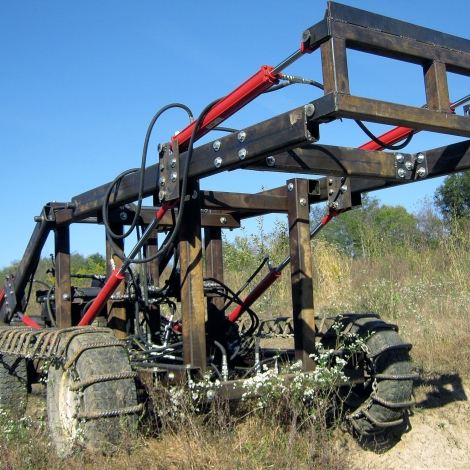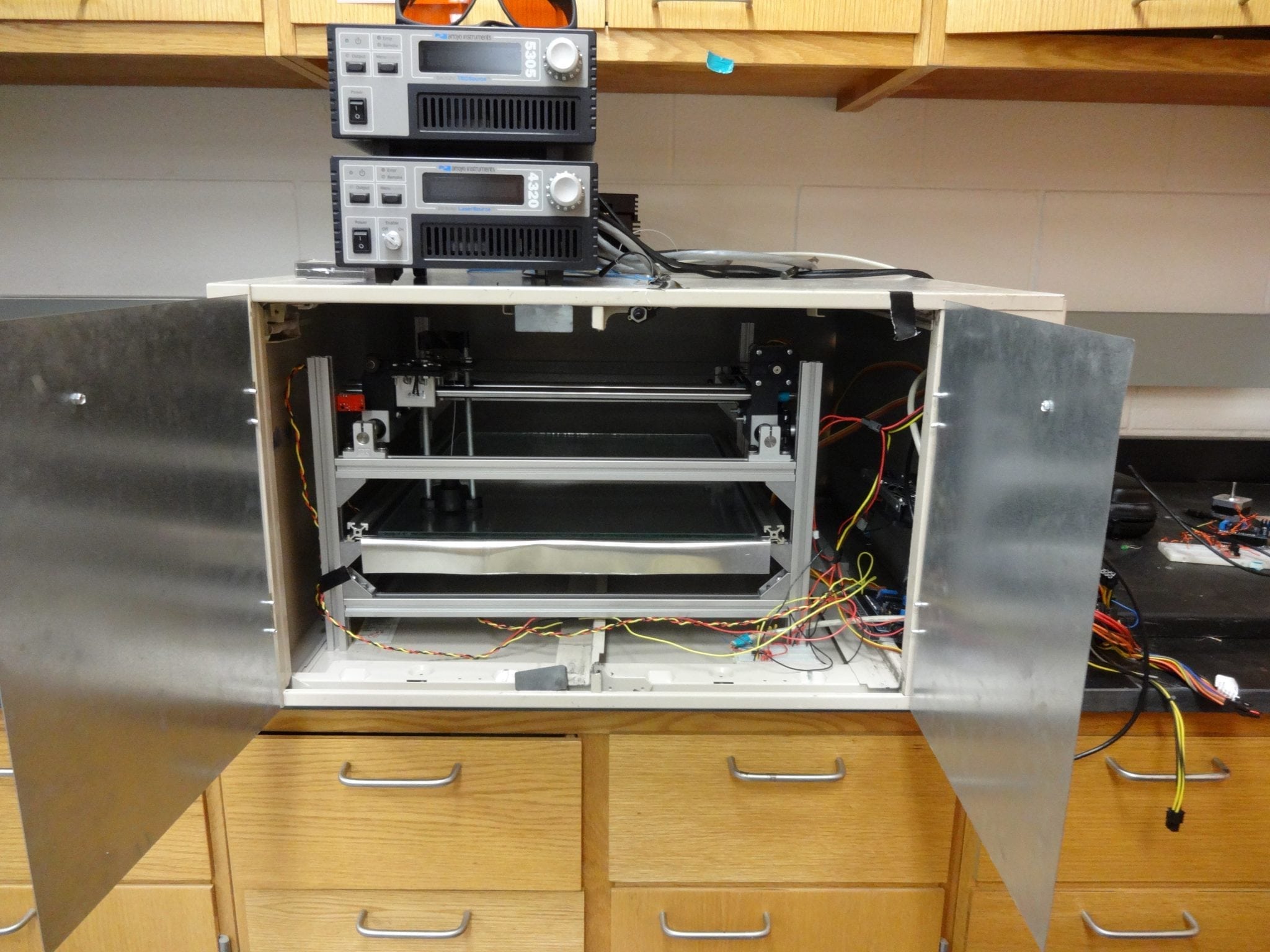Marcin Jakubowski has a vision of a DIY utopia in which everyone is a highly trained and self-sufficient maker. In his dream, the average person can build their own home, assemble a tractor to tend their farm and live in sustainable communities without sacrificing the high technologies to which we’re accustomed.
His world view is steeped in the DIY spirit, so to make it come about, Jakubowski is, of course, doing it himself. Since 2008, the former physicist has lived and worked on a 30-acre farm in northwest Missouri with dozens of fellow visionaries prototyping farm and construction equipment. He aims to perfect the designs for 50 machines and publish their blueprints online, open source and free to use. Full plans for one machine, a compressed-earth block press, are available now, and seven more machines are in the test phase.
Any one of them has revolutionary potential. The LifeTrac tractor, for example, is designed to last a lifetime, require little maintenance, and costs $12,000 to build, Jubowski says, compared to at least $25,000 for one of the cheapest store-bought machines.
To anyone who owns a soldering iron, Jakubowski’s dream can be infectious. But is it practical for communities in the developing world? To answer that, we spoke with Jakubowski’s team and looked at a plan to seed a sustainable farming community in Nigeria.
As told at TED
Jakubowski founded the Open Source Ecology project to develop and publish machine designs. To explain, he ran down his life’s work and vision in a four-minute TED talk. The video is embedded below. He summed up the gist here: “I realized that the truly appropriate, low-cost tools that I needed to start a sustainable farm just didn’t exist, yet. I needed tools that were robust, modular, highly efficient, optimized, low cost, made from local and recycled materials that would last a lifetime, not designed for obsolescence. I found that I would have to build them myself.”
Open source design
The Open Source Ecology wiki is the digital heart of Jakubowski’s movement, home to blueprints, photos and news about work on the Factor e Farm in Missouri. At the farm, a network of engineers, designers and others are building and testing 50 machines including a tractor, a 150-ton hole puncher, a computer- controlled plasma cutter and others. The machines make up the Global Village Construction Set, which, when completed, should be a complete set of tools needed to build a small community. The machine that is finished, the compressed-earth block press, can make bricks out of dirt and clay for constructing houses and other buildings.
The team plans to finish field tests and publish blueprints for 50 machines by the end of 2012. “It is possible with the right collaborations and funding,” Nikolay Georgiev, a spokesperson for the Open Source Ecology project, told E4C by Skype from his home in Germany.
More than meets the eye
All of the open-source machines are modular, made to integrate with one another to improve their efficiency. For example, the tractor digs up a dirt pile, then transforms into a pulverizer to mash the dirt, then its power source attaches to the compressed-earth block press to make bricks. This video gives a two-minute overview of the construction set project.
Fine for Missouri, but Nigeria?
Open source hardware is a beautiful idea, but blueprints may be useless in the hands of our legions of office workers who are not trained in making things. Not to mention unskilled laborers in developing countries. Jakubowski has said that two years of immersion training can prepare someone to build their own communities from the ground up. In an interview with the Financial Times in Germany, he also took a fiercely self-sufficient view of international development work.
FT: I find it hard to imagine a Chinese peasant profiting from what you are offering, given that he most likely neither has a computer nor the skills and materials required for the GVCS. Isn’t your approach too dependent on the achievements of a technologically very advanced civilization?
MJ: Yes.
FT: …And therefore a way of changing society that most humans can neither afford nor even conceive of?
MJ: They can change only if they open up their mind and learn something new.
The developing world may be in a position to gain something from open source designs. Take, for example, NBA hall of famer Hakeem Olajuwon. Olajuwon, a Nigerian-American, led the Houston Rockets to back-to-back championship victories in 1994 and 1995, then started the Noor Foundation in Nigeria in 1999. Noor serves school children, orphans, the homeless and others, and has built a school, a mosque, clinics, lecture halls and other charitable works. Now, the foundation is eyeing open-source farm machines as a practical way to build sustainable communities and industry in Africa.
“There are opportunities to set up a training program there,” Luqman Kaka, Olajuwon’s nephew and a member of the Noor Foundation’s managing team, told E4C from his home in Paris. “Nigeria is a very industrial country, there’s a lot of engineering background.”
Kaka envisions a future for the foundation as an educational facility to teach people to build, use and maintain open source machinery. The foundation has the land, Nigeria has raw materials for construction and trained professionals who can teach newcomers. He thinks it could work. “You need to allow for people to manage their own lives,” Kaka says.
A grand vision
Kaka’s comment echoes some of the material in the Open Source Ecology wiki. Jubowski gives the impression that, to him, his project is more than a way to make a living. It’s a philosophy. As he said in his TED talk: “If this idea is truly sound, then the implications are significant—a greater distribution of the means of production, environmentally sound supply chains, and a newly relevant DIY maker culture that can hope to transcend artificial scarcity.”

